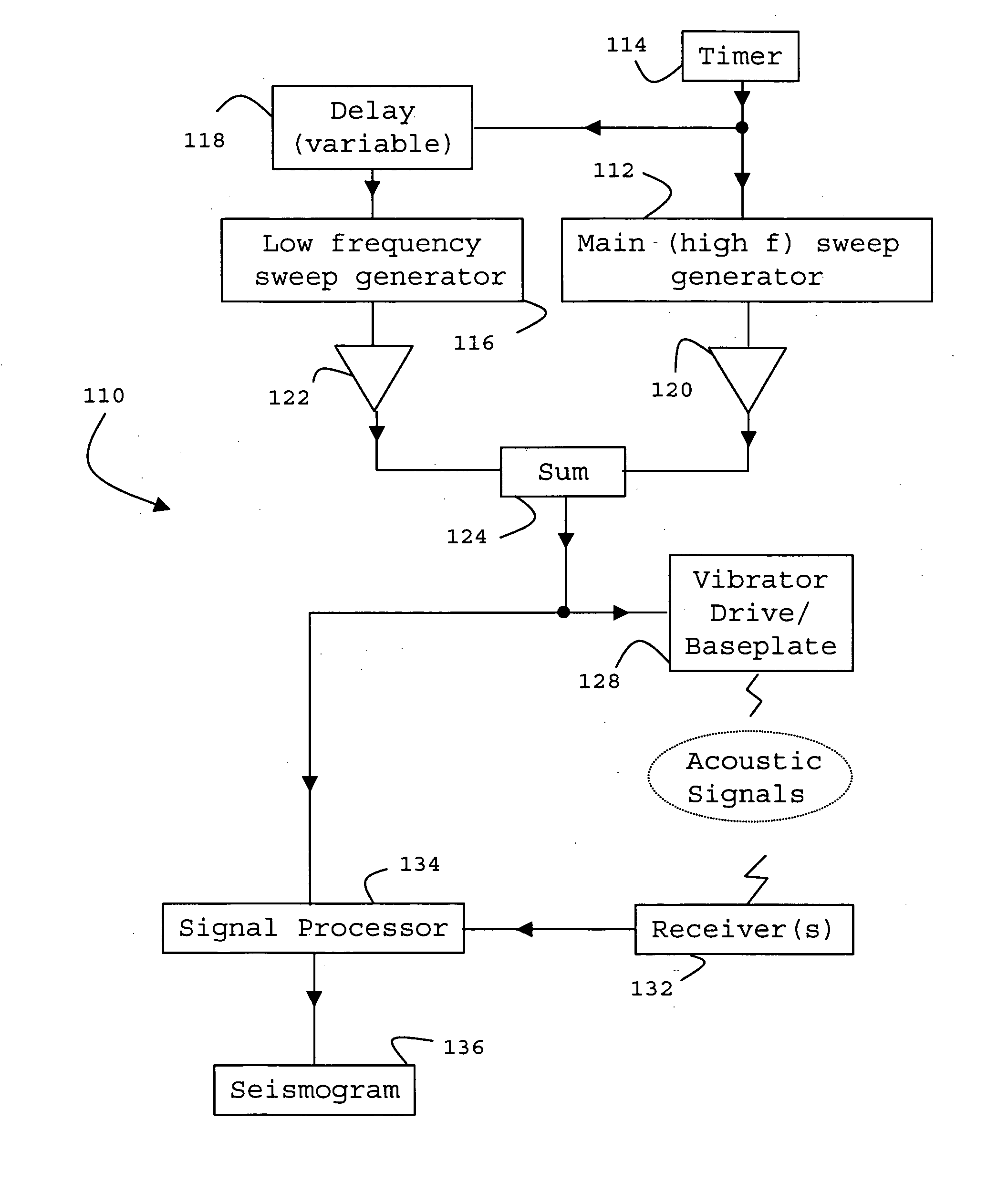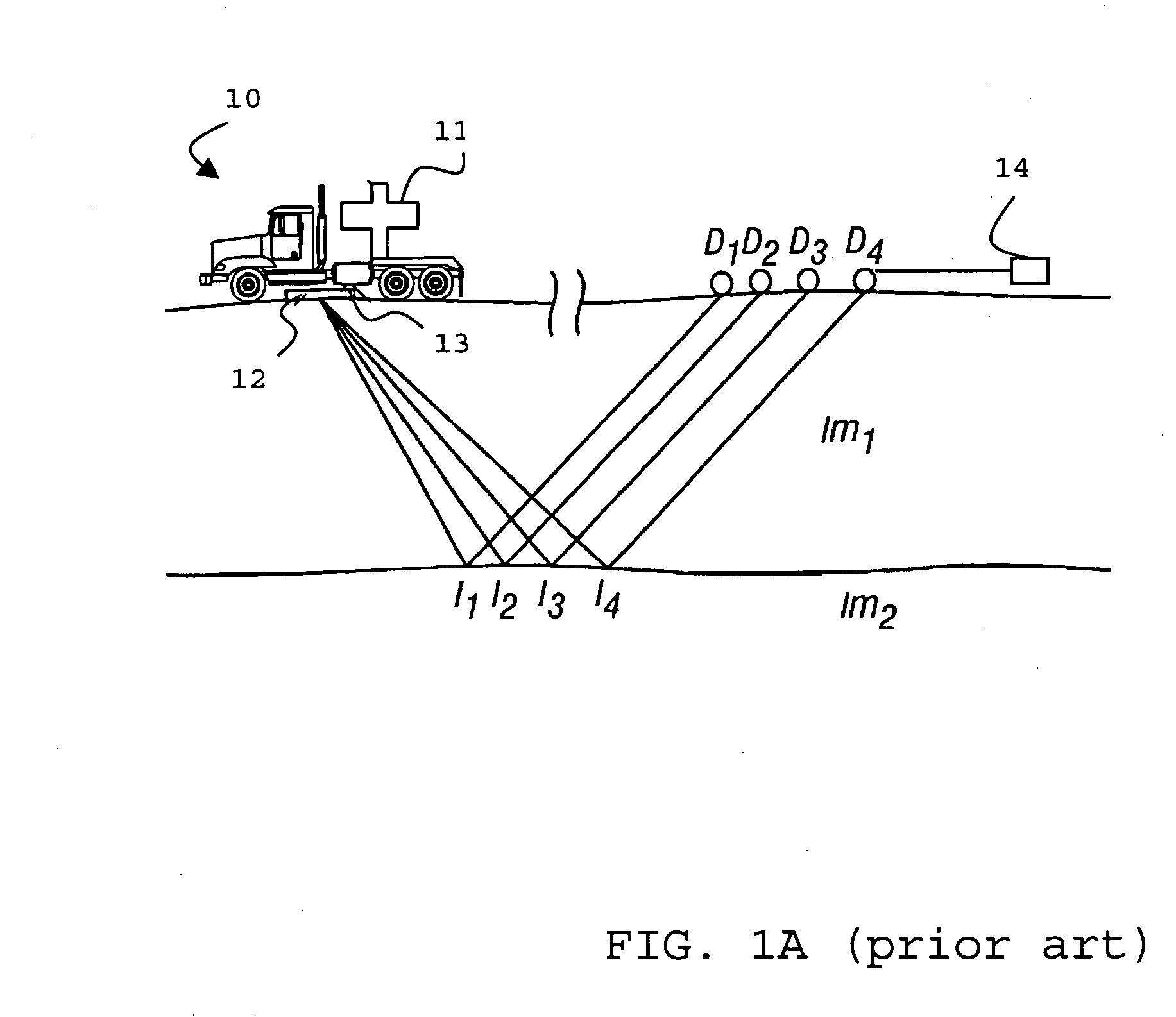Seismic vibratory acquisition method and apparatus
a technology of seismic vibration and acquisition method, which is applied in the field of seismic vibration acquisition method and apparatus, can solve the problems of inability to distinguish individual reflections from recorded signals, large amount of energy is injected into the earth in a very short period of time, and use of impulsive energy sources can pose certain safety and environmental concerns, so as to improve the utilization of a single vibratory source
- Summary
- Abstract
- Description
- Claims
- Application Information
AI Technical Summary
Benefits of technology
Problems solved by technology
Method used
Image
Examples
Embodiment Construction
[0040] The system of FIG. 1A illustrates in a simplified manner a Vibroseis acquisition using a vibrator 11 with a baseplate 12 and a signal measuring apparatus 13, for example accelerometers, whose signals are combined to measure the actual groundforce signal applied to the earth, all located on a truck 10.
[0041] The signal that is generated into the earth by vibrator 11 is reflected off the interface between subsurface impedances Im1 and Im2 at points I1, I2, I3, and I4. This reflected signal is detected by geophones D1, D2, D3, and D4, respectively. The signals generated by vibrator 11 on truck 10 are transmitted to a data storage 14 for combination with raw seismic data received from geophones D1, D2, D3, and D4 and further processing.
[0042] In operation a control signal, referred to also as pilot sweep, causes the vibrator hydraulics 11 to exert a variable pressure on the baseplate 12.
[0043] As can be seen in FIG. 1B, a typical prior art high frequency sweep goes from 10 Hz ...
PUM
 Login to View More
Login to View More Abstract
Description
Claims
Application Information
 Login to View More
Login to View More - R&D
- Intellectual Property
- Life Sciences
- Materials
- Tech Scout
- Unparalleled Data Quality
- Higher Quality Content
- 60% Fewer Hallucinations
Browse by: Latest US Patents, China's latest patents, Technical Efficacy Thesaurus, Application Domain, Technology Topic, Popular Technical Reports.
© 2025 PatSnap. All rights reserved.Legal|Privacy policy|Modern Slavery Act Transparency Statement|Sitemap|About US| Contact US: help@patsnap.com



